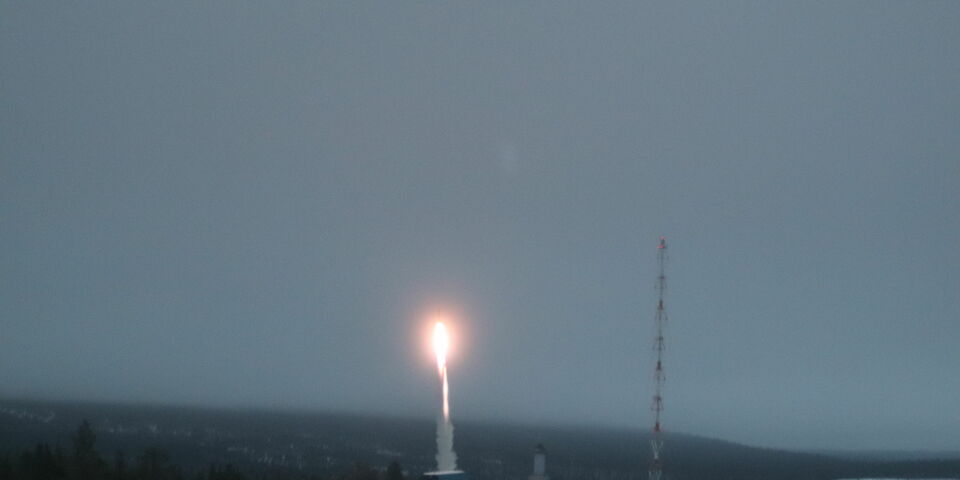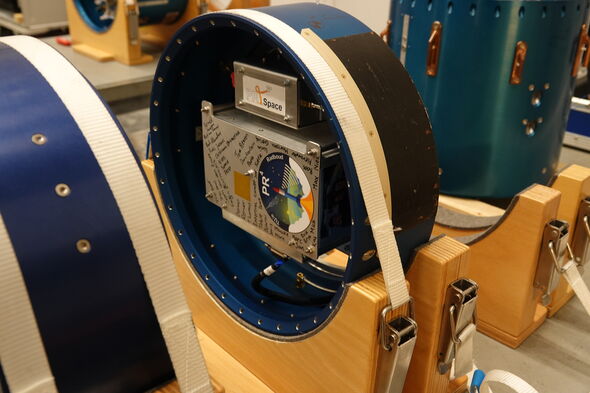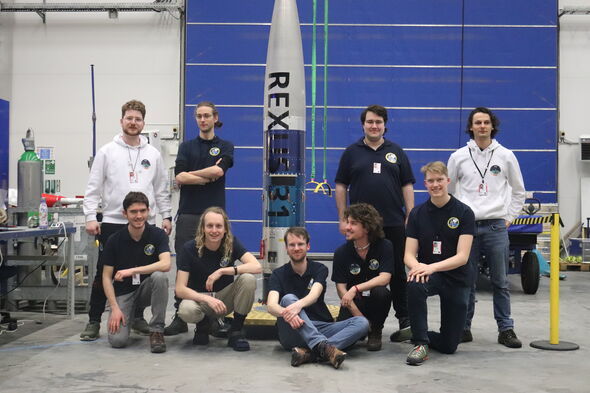TU/e experiment successfully shoots into space
A rocket with a very special cargo has been successfully launched into space. It carries a module developed by student team PR⁴ Space, a collaboration between TU/e and Radboud University. The module measures the rocket’s location by sending signals to Earth. It also has a built-in instrument that converts cosmic radiation into visible light.
“I was still up on the roof a little while ago,” says Frie Roest, a Mechanical Engineering student at TU/e and member of PR⁴ Space. Some work needed to be done on the receivers attached to the roof near the launch pad. With just under an hour left before the launch, there was some concern as to whether they would work in time, but: “we just had a successful launch.”
Text continues under image.
Rocket
The rocket has a diameter of 36 centimeters. It can reach a height of 80 kilometers. The student team placed a sort of module inside the rocket that sends a signal to the receivers at the ground station using so-called radio interferometry. “It’s the same concept as GPS, but that doesn’t work very smoothly on rockets yet. With our models, we’re turning the concept around. Instead of the rocket sending a signal to satellites in space, it sends a signal to our ground stations. This allows us to determine the rocket’s location.”
In addition to a module for radio interferometry, the rocket also contains another measuring instrument developed by the student team. “There was still some room left, so in the heart of our instrument, at the center of gravity, we placed a large square block. The block is filled with a particular type of plastic that converts cosmic radiation into visible light.” Using light sensors, they can then indirectly measure the cosmic radiation.
“We’ve done that experiment before, but this is an improvement over the previous one.” Roest is referring to the PR³ Space student team. “The aim is to test whether these techniques work under these conditions.” In the future, this technology may be used to measure cloud formation, allowing for more accurate weather predictions.
Launch
The launch takes place at the Esrange Space Center in Sweden. The so-called REXUS project is a partnership between, among others, the European, Swedish and German space agencies (the ESA, SSC and DLR, respectively). It is intended for students in higher education across the whole of Europe. They get to conduct scientific and technological experiments on rockets and balloons.




Discussion